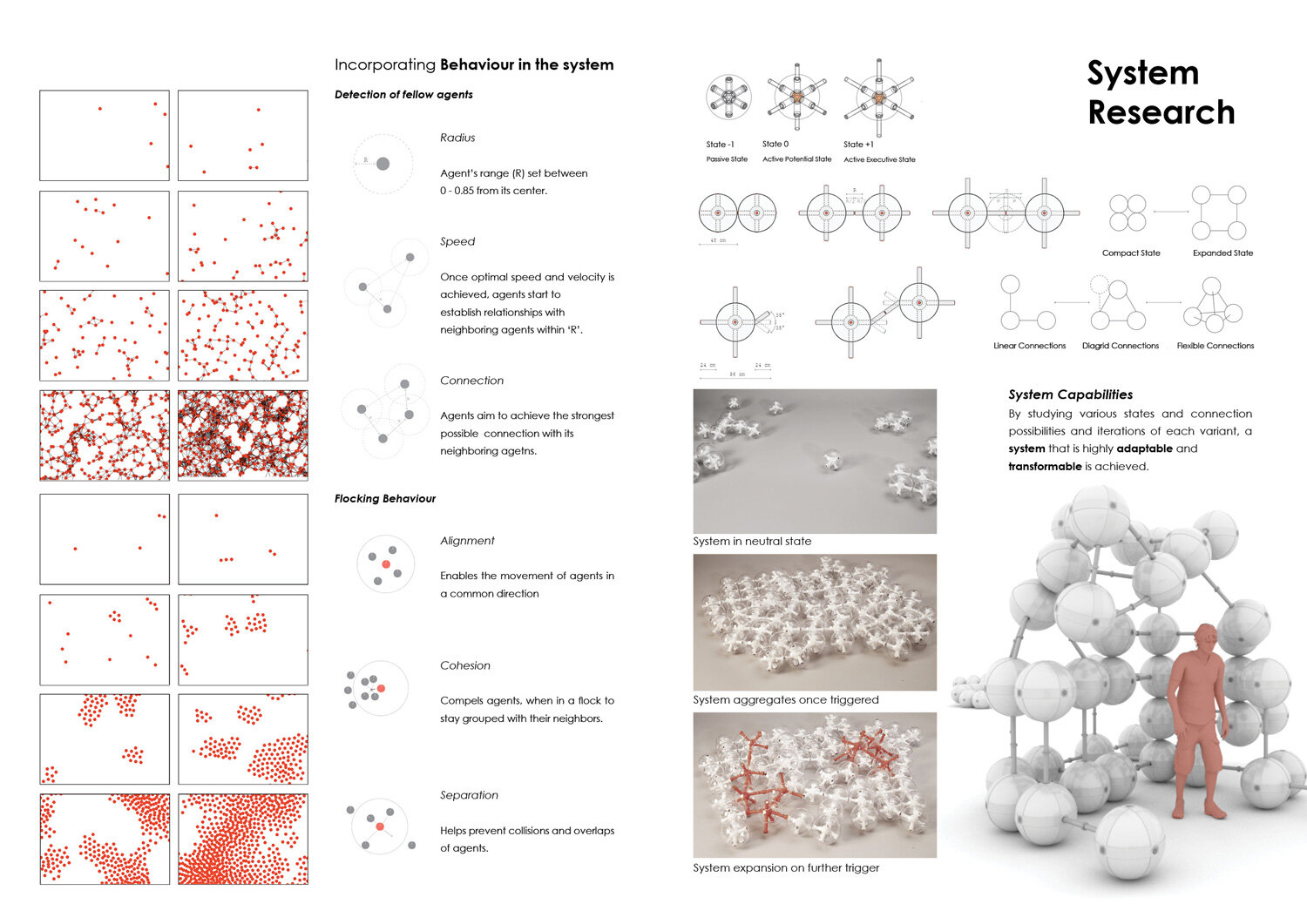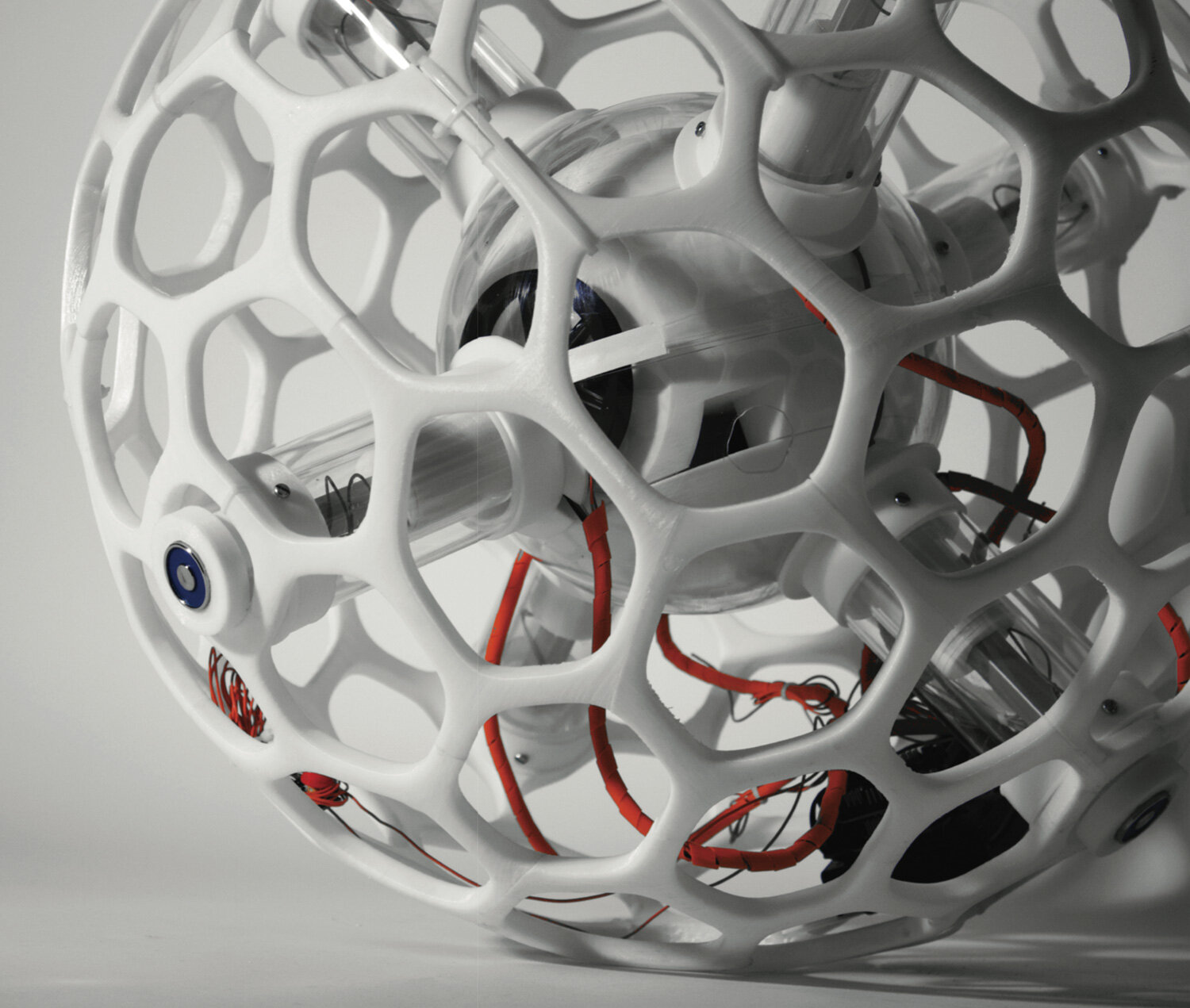Constructing agency 2018-2020
orb(i)s
Studio Theodore Spyropoulos
Tutor Mostafa El-Sayed, Apostolos Despotidis
Team Elisavet Konstantinidou (Greece), Misbah Shehreen Baig (India), Roshni Prakash Gera (India), Yunzhu Duan (China)
Orb(i)s is a Design & Research Project aimed at addressing the constant change in urban environments, in need of an infrastructure that is adaptive and responsive to a continuous state of change. Therefore, Orbis is a proposal for a Prototypical System, which is highly adaptive in nature, and creates an urban infrastructure that responds and caters to the changing needs and conditions within the city, by augmenting the everyday experiences and activities. Orb(i)s is a behavioural assembly that establishes the possibilities of a dynamic environment not limited to a building plan; rather, it is autonomous, adaptable, dynamic and self-assembling based on real-time data culminating in a constantly reconfiguring ecology. The sensing abilities of the system make it self-aware and encourage any decision-making, while its self-assembling quality arises from a unit-to-unit communication that leads to a higher order of organisations and structures. The unit, being the smallest element, in one of its states, can be mobile, sense, and make decisions. Upon coming together with other units, the overall system can undergo a state change, therefore demonstrating collective intelligence and a plethora of behaviours that ultimately provide a higher level of flexibility and adaptability.
The highly adaptive nature of the system begins from the single unit’s performance and reaches the capacity to act as a collective whole. The system also exhibits both rigid and flexible behaviours through its controlled transformation. Transformability at the unit level is displayed through the ability to telescopically extend its legs and connect to other units. Through this controlled flexibility, these connecting legs bring about considerable possibilities of transformation within an existing structure, without the need for additional units. Further to its adaptive, space-making ability, the system interacts with its users through illumination. The ambience created by the play of light and shadow, though not physical, brings about transformation in the space. On the whole, we envision that our ecology provides both a spatial and an experiential infrastructure, that ultimately augments and encourages urban change.
















